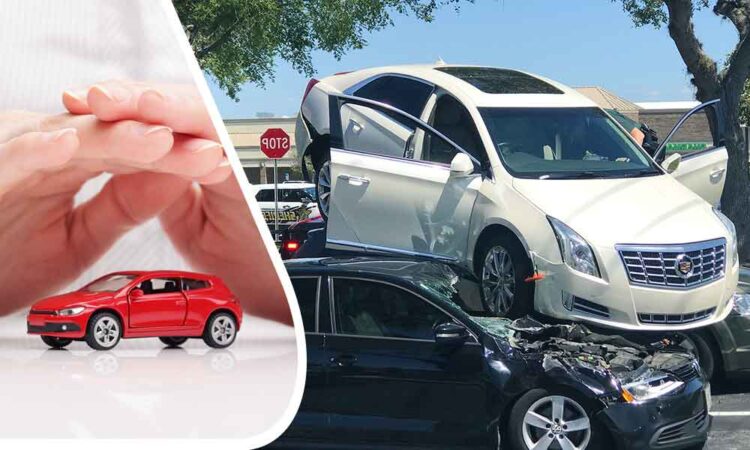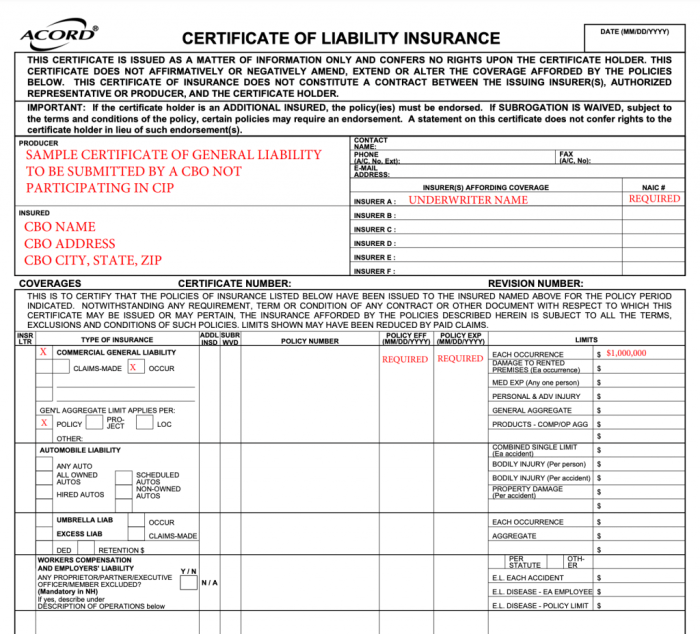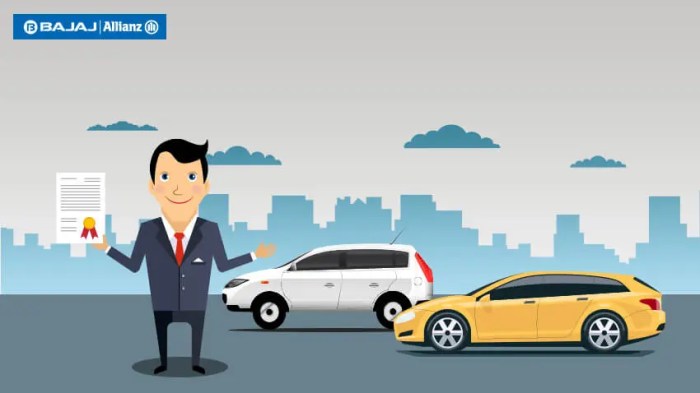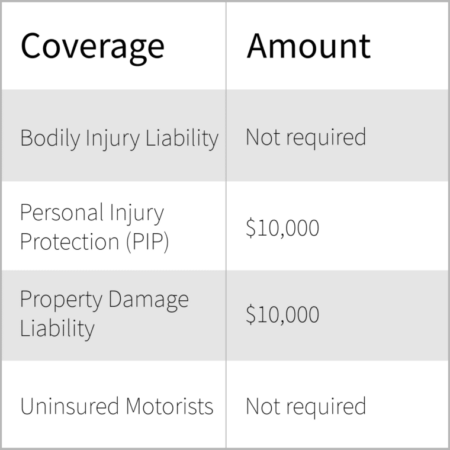
Can a vehicle be insured by two different companies? It might sound like a strange question, but it’s actually a topic that pops up more often than you might think. Imagine you’ve got a sweet ride, a real head-turner, but you’re also driving it for work. Or maybe you’re a thrill-seeker with a classic car that’s always hitting the open road. These situations, and more, can make dual insurance a real game-changer.
Dual insurance, in a nutshell, is having two separate insurance policies for the same vehicle. It’s like having a backup plan, a safety net, just in case one policy doesn’t cover everything. But before you dive headfirst into this world, it’s important to understand the legal stuff, the different types of dual insurance, and the factors that might make it a good fit for you.
Understanding Dual Insurance
Imagine you’re cruising down the highway, and suddenly, bam! You’re in a fender bender. You’re thinking, “Great, now I have to deal with insurance,” but what if you have two insurance policies covering your ride? That’s where dual insurance comes in, and it’s not as confusing as it sounds.
Dual insurance, also known as double insurance, is when you have two separate insurance policies covering the same vehicle. This might seem redundant, but there are some legit reasons why someone might opt for this setup.
Scenarios Where Dual Insurance Might Be Necessary
Think of dual insurance as a backup plan for your car. It’s like having a safety net in case one of your policies doesn’t cover everything. Here are some situations where dual insurance might be the way to go:
- When you have a high-value vehicle: If you’re rolling in a luxury car or a classic beauty, you might want to have extra coverage to ensure you’re fully protected in case of an accident. You can get one policy through your primary insurer and another through a specialist insurer who focuses on high-value vehicles. This way, you’re covered from multiple angles.
- When you’re using your car for business: If you use your car for work, you might need additional coverage beyond your personal policy. Your business might require its own insurance policy for the car, especially if you’re transporting goods or clients. This ensures that both your personal and business liabilities are covered.
- When you have a modified car: If you’ve tricked out your ride with custom parts or modifications, your standard insurance policy might not cover everything. Getting a separate policy that specifically covers these modifications can give you peace of mind knowing that your investment is protected.
Benefits of Dual Insurance
Dual insurance can be like having a secret weapon in your insurance arsenal. It can offer some sweet benefits:
- Increased coverage: Dual insurance can give you more coverage than a single policy. This means you’re less likely to be left hanging if something unexpected happens.
- More options for claims: If you have two policies, you have more flexibility when filing a claim. You can choose the policy that offers the best coverage for your specific situation.
- Peace of mind: Knowing you have multiple layers of protection can give you a sense of security, especially if you’re driving a high-value vehicle or using your car for business.
Drawbacks of Dual Insurance
While dual insurance has its perks, there are a few things to keep in mind:
- Higher premiums: Having two policies means you’ll be paying two sets of premiums, which can add up to a significant expense.
- Complexity: Managing two insurance policies can be a bit more complex than managing one. You’ll need to keep track of both policy details, renewal dates, and claims processes.
- Potential for overlap: It’s important to ensure that your two policies don’t overlap in coverage. This can lead to confusion and disputes when filing a claim.
Legal and Regulatory Considerations
Okay, so you’re thinking about double-teaming your car insurance with two different companies. It sounds like a good idea, but before you jump into the driver’s seat, you need to know about the legal side of things. It’s like trying to park a car in a crowded parking lot; there are rules and regulations you need to follow.
State Laws and Regulations
Every state has its own set of laws about insurance, and they can vary a lot. Some states are totally cool with dual insurance, while others might give you the side-eye. You need to check with your state’s Department of Insurance to see what the deal is. Think of it like checking the rules before you play a new video game.
The legal implications of dual insurance can vary significantly depending on the specific state.
Potential Conflicts and Overlaps
Having two insurance companies on your team can be confusing, especially if you’re in an accident. Who’s gonna pay for what? It’s like having two friends who both want to buy you dinner, but you’re only hungry for one meal.
- Coverage Overlap: This happens when both insurance companies cover the same thing. Think of it like two insurance companies buying you the same pizza. It’s good to have options, but you don’t need two of the same thing.
- Coordination of Benefits: Insurance companies have rules about how they work together when you have dual coverage. They try to avoid paying twice for the same thing. It’s like having two insurance companies trying to split the bill for your pizza.
- Subrogation: This is when one insurance company tries to get its money back from the other insurance company after paying for a claim. It’s like one insurance company saying, “Hey, you owe me for that pizza!” to the other insurance company.
Types of Dual Insurance

Dual insurance for vehicles can be a confusing concept, especially for those unfamiliar with the intricacies of insurance. But, it can be a valuable tool in specific situations. To help you navigate this landscape, let’s break down the different types of dual insurance.
Types of Dual Insurance
There are two primary categories of dual insurance for vehicles:
- Stacking Insurance: This type of dual insurance involves two separate policies from different companies that provide coverage for the same vehicle. Think of it like a “double-dip” for coverage.
- Layer Insurance: In this scenario, one insurance policy acts as the primary coverage, while the other serves as a secondary or excess layer. It’s like having a backup plan for when the primary coverage isn’t enough.
Stacking Insurance
This type of dual insurance allows you to combine the coverage limits of two different policies for the same vehicle.
For example, if you have a policy with Company A with a $100,000 liability limit and a policy with Company B with a $50,000 liability limit, you could potentially have a total of $150,000 in liability coverage.
This approach can be beneficial if you need to cover a higher amount of risk, such as for high-value vehicles or for individuals with a high-risk profile.
- Situation 1: A classic car enthusiast owns a vintage Mustang. They might opt for stacking insurance to ensure they have sufficient coverage for the car’s high value.
- Situation 2: A driver with a history of accidents or traffic violations could stack their insurance to get more coverage and potentially lower premiums by spreading the risk.
Layer Insurance
Layer insurance is a common strategy for individuals with high-value vehicles or those who require extensive coverage.
- Primary Policy: This policy provides the initial layer of coverage, covering the basic requirements for the vehicle.
- Excess Layer: This policy acts as a secondary layer, providing additional coverage above the primary policy’s limits. It kicks in when the primary policy’s limits are exhausted.
Imagine you have a $500,000 Ferrari. Your primary policy might cover $100,000 in damage, but you want extra protection for the full value. You could purchase a secondary policy with a $400,000 limit, creating a layered approach.
Layer insurance can be a great way to protect yourself against significant financial losses in the event of an accident.
- Situation 1: A professional athlete or celebrity might choose layered insurance for their luxury car, ensuring complete coverage for a high-value asset.
- Situation 2: A business owner who uses their vehicle for work might layer their insurance to cover potential business losses in the event of an accident.
Factors Influencing Dual Insurance
The decision to have dual insurance for a vehicle is a complex one, often influenced by a variety of factors. Understanding these factors is crucial for individuals considering this option, as it allows them to weigh the potential risks and benefits associated with each. This can help them make an informed decision that aligns with their specific needs and circumstances.
Coverage Gaps
When one insurance policy doesn’t fully cover the potential risks associated with a vehicle, dual insurance can provide an extra layer of protection. For instance, if one policy has a lower liability limit than desired, a second policy can bridge the gap and offer greater financial security in case of an accident.
- Higher Liability Limits: Dual insurance can help individuals meet their specific liability needs, particularly in high-risk situations. For example, a driver with a high-value vehicle or a history of accidents might opt for dual insurance to ensure adequate coverage in case of a major incident.
- Specialized Coverage: Some insurance companies offer specialized coverage options, such as coverage for specific types of vehicles or for certain types of risks. Dual insurance can be a way to access these specialized coverages without needing to switch insurers.
Cost Savings, Can a vehicle be insured by two different companies
In certain situations, dual insurance can be a cost-effective option. This is particularly true when the cost of two separate policies is lower than the premium for a single policy that offers the same level of coverage.
- Lower Premiums: If one insurer offers a lower premium for a specific type of coverage, while another insurer offers a lower premium for another type of coverage, dual insurance might be more affordable.
- Discounts: Some insurers offer discounts for bundling multiple types of insurance. For example, a driver might receive a discount for insuring their car and home with the same company.
Risk Management
Dual insurance can be a strategic risk management tool, particularly for individuals who want to minimize their financial exposure in the event of an accident or other covered event.
- Diversification: Dual insurance spreads the risk across multiple insurers, potentially reducing the impact of a single insurer’s financial difficulties or policy changes.
- Enhanced Protection: By having multiple policies, individuals can increase their overall level of protection and ensure that they are adequately covered for various potential risks.
Personal Circumstances
Factors such as driving history, vehicle type, and location can influence the decision to have dual insurance.
- High-Risk Drivers: Drivers with a history of accidents or traffic violations may find it difficult to secure affordable insurance from a single insurer. Dual insurance can help them obtain coverage from multiple insurers, potentially lowering their overall premiums.
- High-Value Vehicles: Owners of expensive vehicles might opt for dual insurance to ensure adequate coverage for their vehicle’s value. This can provide greater peace of mind in the event of a major accident or theft.
Practical Considerations
Okay, so you’re thinking about dual insurance for your ride. That’s cool, but let’s get down to the nitty-gritty of how to make it happen. We’re gonna talk about the steps you need to take, how to find the right insurance companies, and what you need to have on hand when you apply.
Obtaining Dual Insurance
Alright, let’s break down the process of getting dual insurance. It’s not exactly like ordering pizza, but it’s not rocket science either. Here’s what you need to do:
- Choose Your Insurers: First, you need to pick two insurance companies. This might involve some shopping around to find the best deals and coverage options that suit your needs. Think about what’s important to you – maybe it’s the lowest price, maybe it’s specific coverage for certain types of accidents, or maybe it’s the reputation of the company.
- Contact the Insurers: Once you’ve got your two insurance companies in mind, give them a call or visit their websites. Let them know you’re interested in dual insurance for your vehicle. They’ll probably have some questions about your vehicle, driving history, and your desired coverage.
- Compare Coverage Options: This is where you need to be a savvy shopper. Compare the coverage offered by each insurer, including things like liability limits, collision coverage, comprehensive coverage, and any additional features they offer. Make sure you understand the terms and conditions of each policy.
- Get Quotes: Now, it’s time to get some numbers. Ask each insurer for a quote for the coverage you want. They’ll likely ask for some basic information about your vehicle and driving history. Don’t forget to factor in any discounts you might qualify for, like good driver discounts or multi-car discounts.
- Review and Choose: Once you have your quotes, take some time to review them carefully. Compare the coverage, premiums, and any additional features offered. Choose the two policies that best meet your needs and budget.
- Apply for Coverage: You’ll need to fill out applications for each insurer. Make sure you have all the necessary documents ready, including your driver’s license, vehicle registration, proof of previous insurance, and any other documents they request.
- Pay Your Premiums: Once your applications are approved, you’ll need to pay your premiums for both policies. Make sure you understand the payment schedule and how you’ll be billed.
Finding Suitable Insurers
Finding the right insurance companies is like finding the perfect pair of shoes – you gotta try on a few before you find the ones that fit. Here are some tips to help you find suitable insurers:
- Ask for Recommendations: Talk to friends, family, and colleagues. They might have some good recommendations for insurance companies they’ve used in the past.
- Check Online Reviews: Head to websites like Yelp, Google Reviews, or Trustpilot to see what other people are saying about different insurance companies.
- Compare Quotes: Use online comparison tools to get quotes from multiple insurers at once. This can save you time and help you find the best deals.
- Look for Discounts: Many insurance companies offer discounts for good drivers, safe vehicles, or if you bundle multiple policies.
- Read the Fine Print: Don’t just focus on the price. Make sure you read the policy documents carefully to understand the coverage, terms, and conditions.
Documents and Information
Okay, so you’re ready to apply. You gotta be prepared, just like you’d pack your backpack for a road trip. Here’s what you’ll need:
- Driver’s License: This is a no-brainer. You’ll need to provide your driver’s license information to both insurers.
- Vehicle Registration: You’ll need proof that you own the vehicle and that it’s registered in your name.
- Proof of Previous Insurance: You’ll need to provide evidence that you’ve had insurance in the past. This helps the insurers assess your risk.
- Vehicle Identification Number (VIN): The VIN is a unique number that identifies your vehicle. You’ll need to provide this to both insurers.
- Personal Information: You’ll need to provide your contact information, including your name, address, and phone number.
- Financial Information: You’ll need to provide your payment information, such as your credit card or bank account details.
Claim Procedures: Can A Vehicle Be Insured By Two Different Companies

Filing a claim under dual insurance can be a bit like navigating a choose-your-own-adventure book – the path you take depends on the type of dual insurance you have. But don’t worry, we’ll break it down for you.
The process for filing a claim under dual insurance generally involves contacting both insurance companies and providing them with the necessary information about the incident. However, the specific steps and procedures can vary depending on the type of dual insurance and the terms of the policies.
Claims Procedures for Different Types of Dual Insurance
The way you file a claim can be as different as the types of dual insurance:
- Primary and Excess Coverage: You file a claim with the primary insurer first. If the claim exceeds the primary policy’s limits, you then file a claim with the excess insurer for the remaining amount. Imagine you have $100,000 in primary coverage and $50,000 in excess coverage. If you have a $120,000 claim, you file with the primary insurer for $100,000 and then with the excess insurer for the remaining $20,000.
- Stacking Coverage: You can file a claim with either insurer, and the coverage limits of both policies are combined. Think of it like having two separate pools of money to draw from. If you have two policies with $50,000 in coverage each, you have a total of $100,000 to cover your claim.
- Shared Coverage: Both insurers share the cost of the claim based on a pre-determined agreement. This can be tricky, as you’ll need to coordinate with both companies to figure out how the costs are split. It’s like a team effort, with both insurers working together to handle the claim.
Challenges in Handling Dual Insurance Claims
While dual insurance can offer extra protection, it can also create a few challenges:
- Coordination of Benefits: Determining which insurer is responsible for what portion of the claim can be complex. You might need to juggle multiple claims adjusters and paperwork. Think of it as a multi-player game, where you need to keep track of each insurer’s moves.
- Potential for Disputes: Disagreements can arise between insurers about coverage responsibilities or claim amounts. This can lead to delays in processing your claim and even litigation. It’s like a negotiation process, where you need to be prepared to advocate for your rights.
- Increased Complexity: Dealing with multiple insurers can add to the overall complexity of the claims process. You might need to provide the same information to multiple parties and keep track of different timelines. It’s like juggling multiple projects at once, with each insurer having its own set of requirements.
Ultimate Conclusion

So, can a vehicle be insured by two different companies? The answer is a resounding “maybe!” It’s all about your individual needs and circumstances. Do your research, compare your options, and talk to a trusted insurance agent. They can help you navigate the world of dual insurance and find the right coverage for your unique situation. Remember, it’s about being prepared and protected, no matter what life throws your way.
Common Queries
What are the main benefits of having dual insurance?
Dual insurance can offer greater coverage, provide peace of mind, and potentially lower your overall costs if you can find insurers who specialize in different areas.
What are some common reasons people opt for dual insurance?
People often choose dual insurance for business use, high-value vehicles, or when they need specialized coverage for specific situations, like racing or off-road driving.
How does dual insurance work in terms of claims?
The claims process can vary depending on the type of dual insurance, but generally, you’ll file a claim with the insurer whose policy covers the specific incident.




